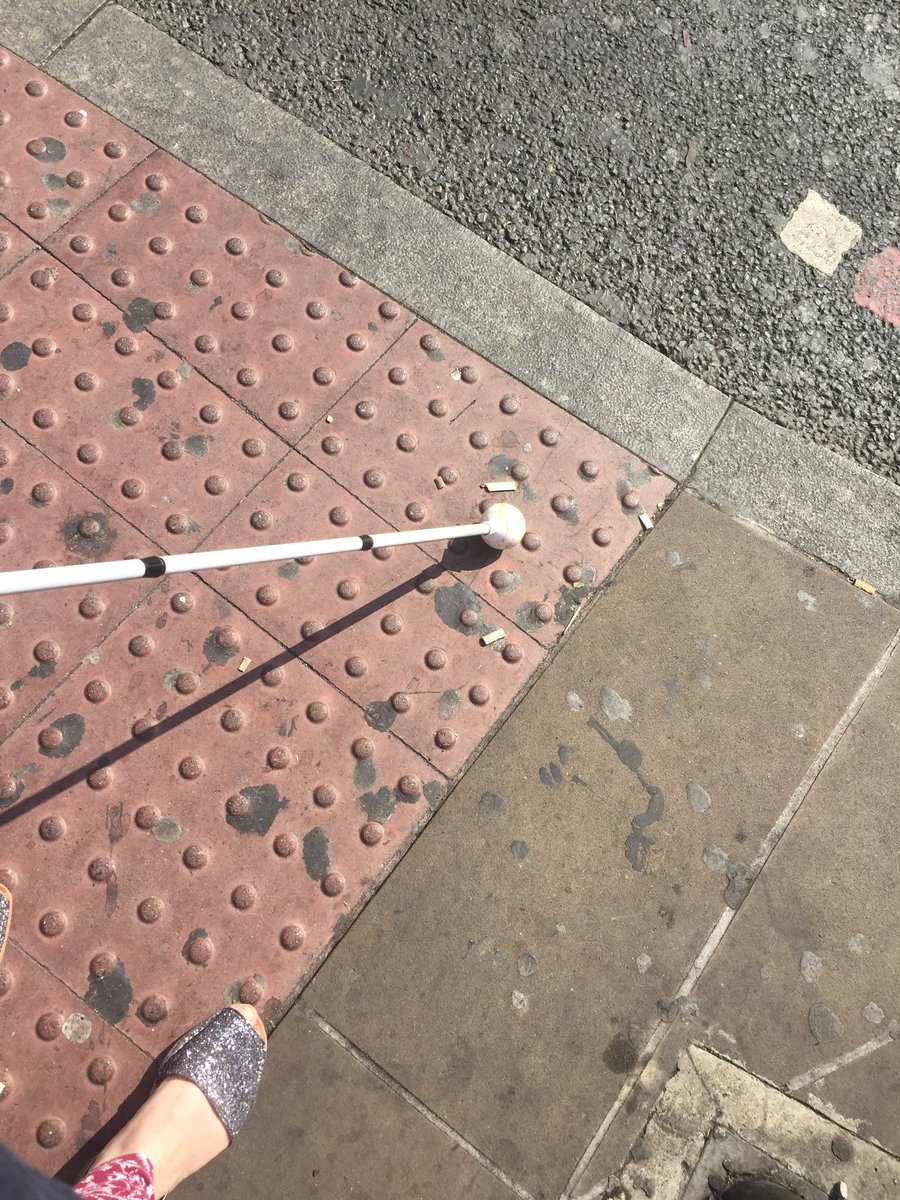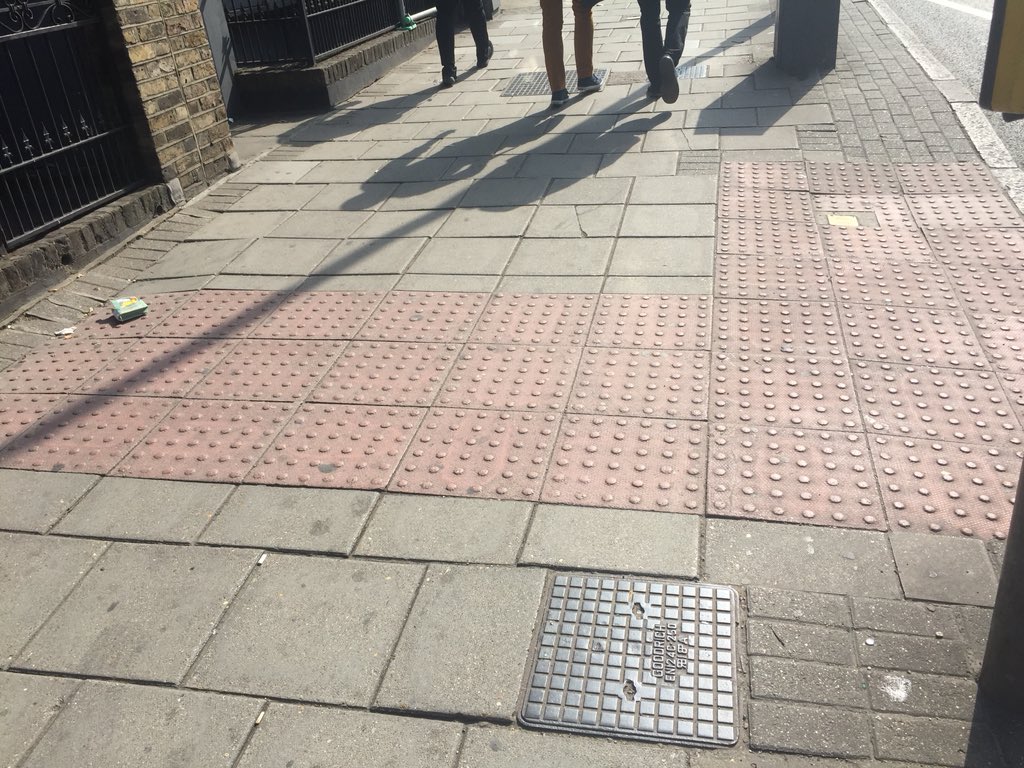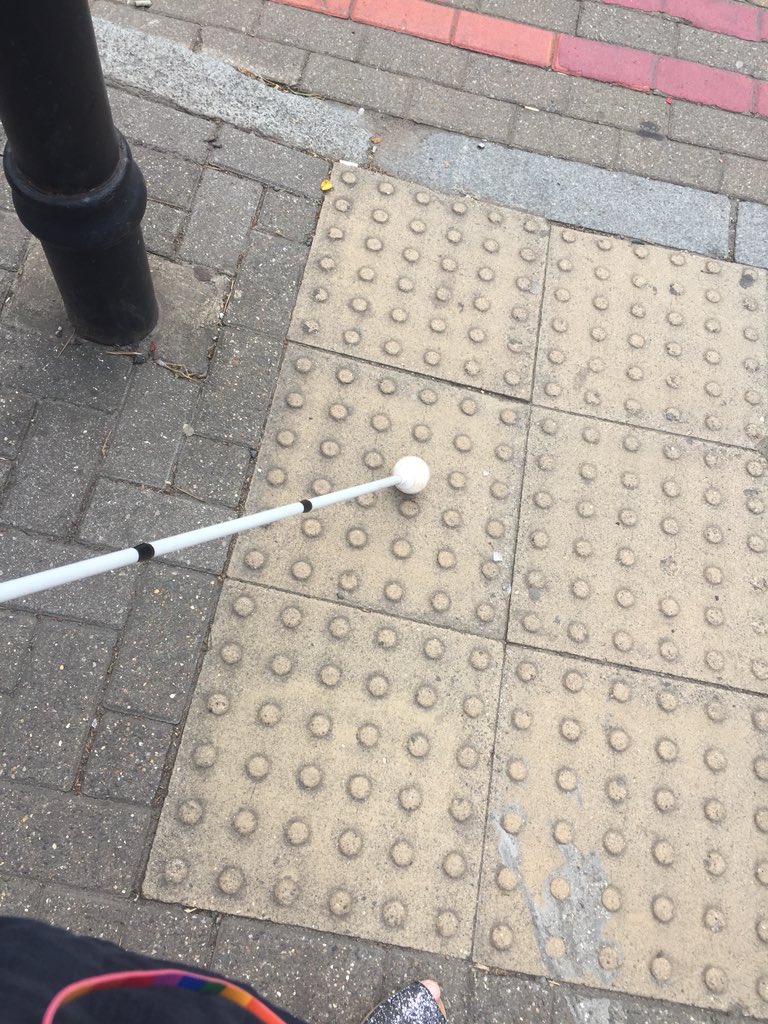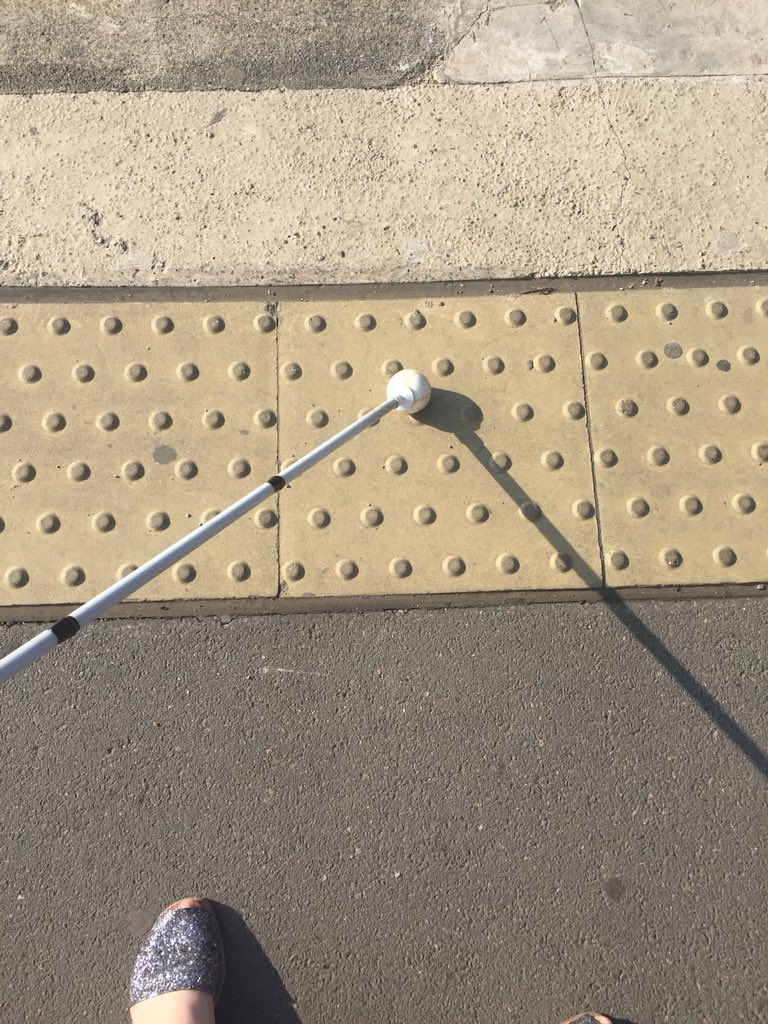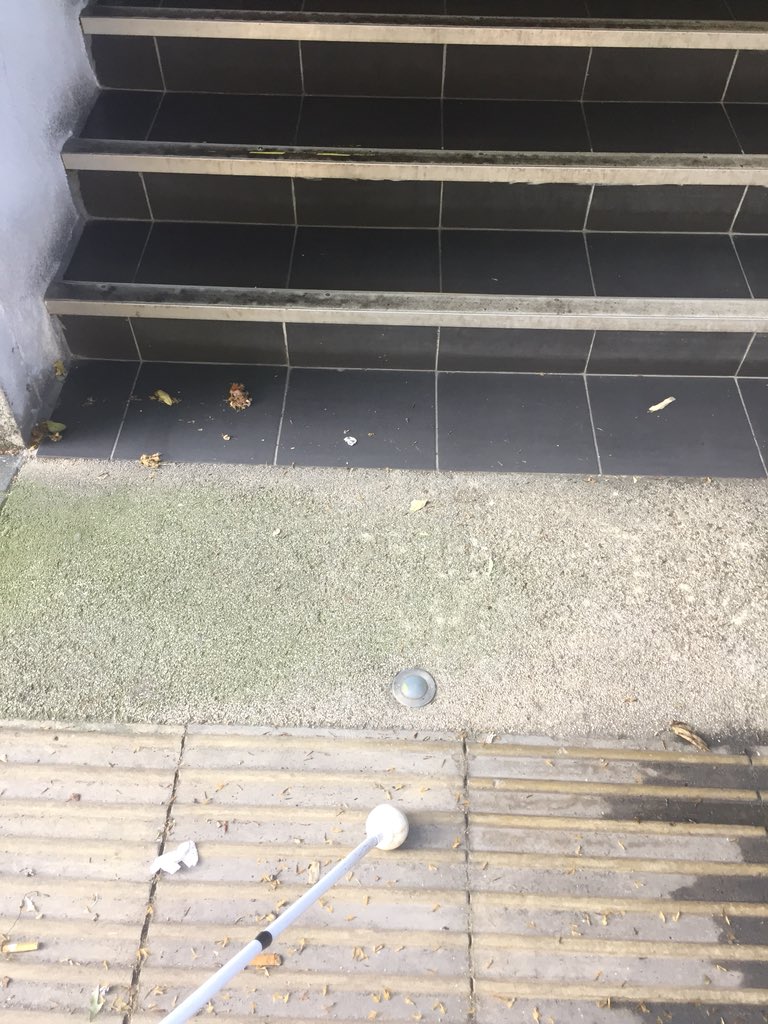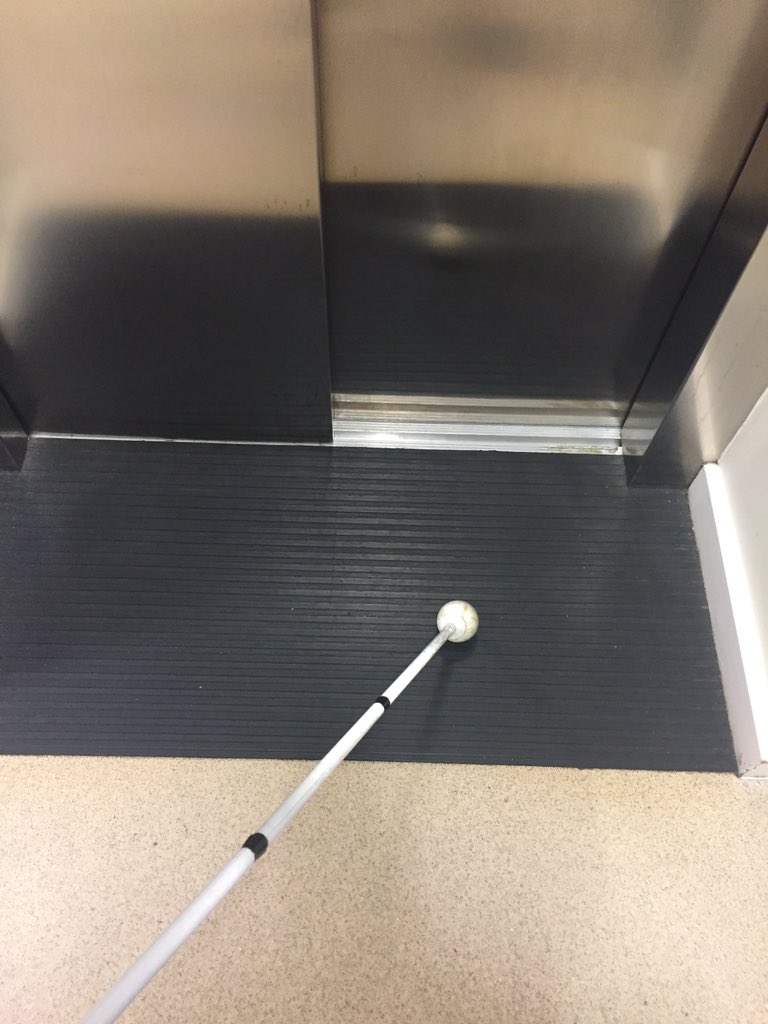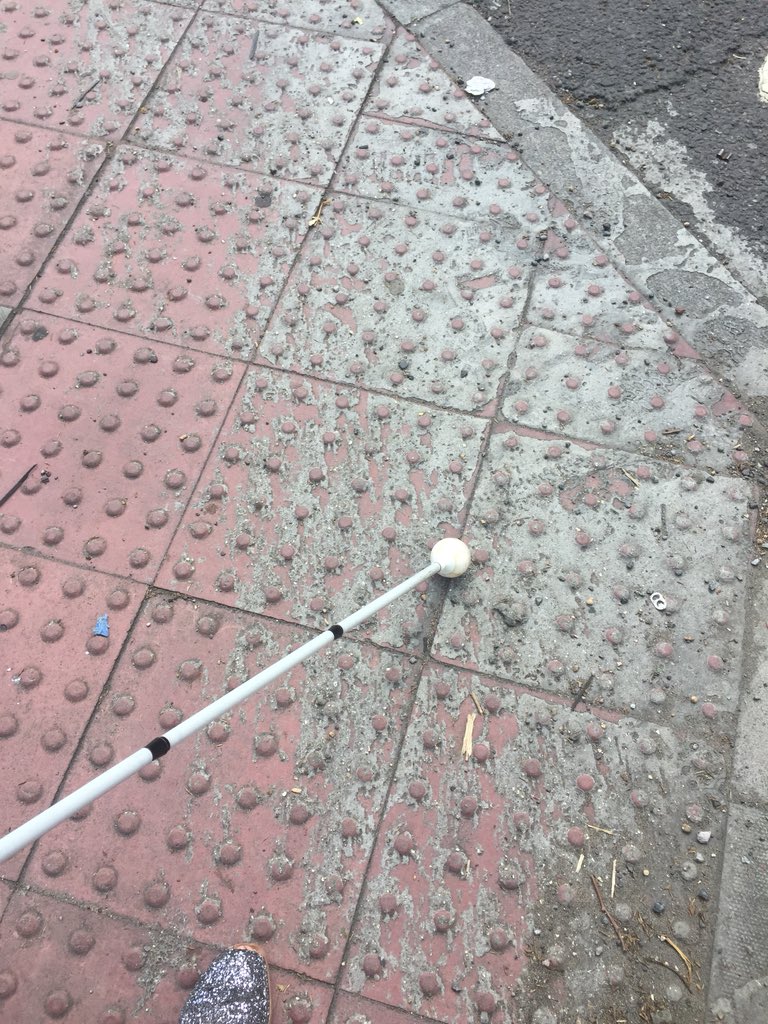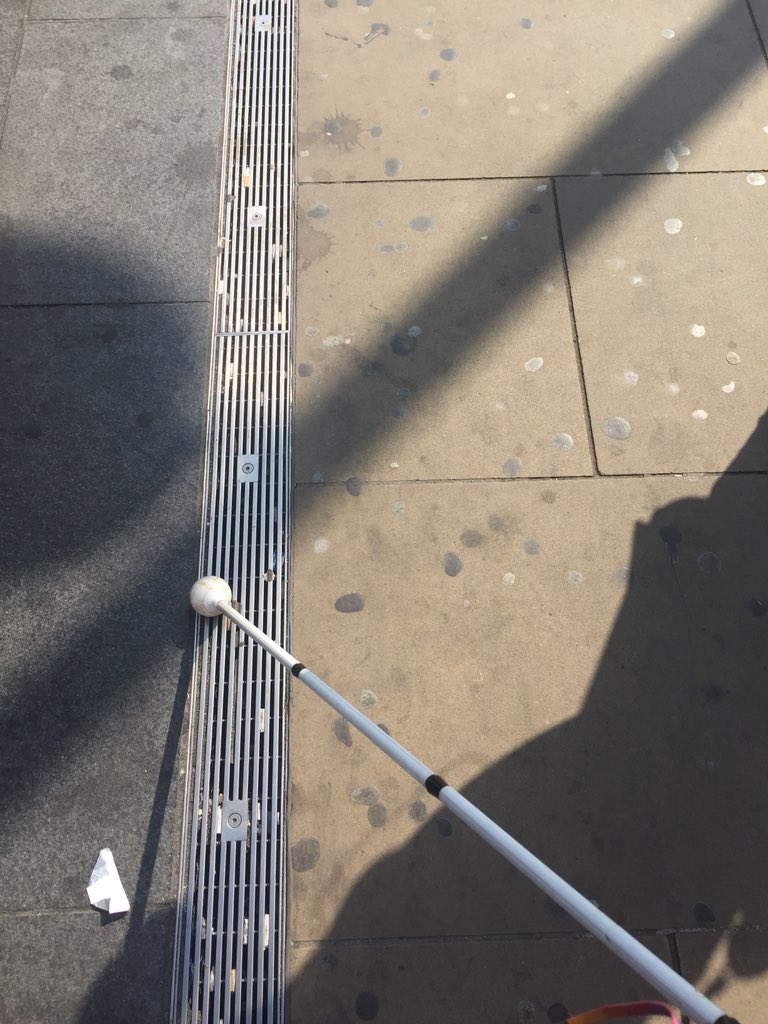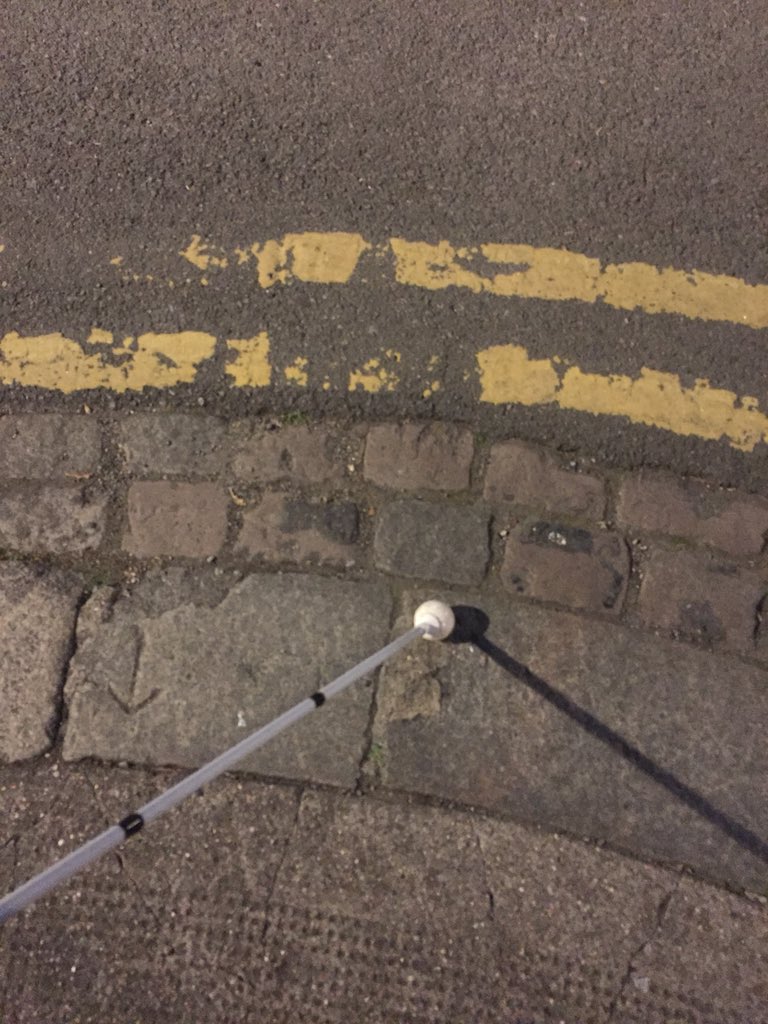As I’ve been trained by fab @guidedogs how to navigate using tactile pavement I thought I would share some key info in a thread! First, blister paving at road crossing points. The tactile round bumpy paving at pelican crossings is usually red & bumps are in horizontal rows.
At pelican or controlled pedestrian crossings the red bumpy blister paving is in an L shape. The vertical tail of the L connects to the building line. This helps VI people find the crossing as they follow the L into the bottom corner. This also leads to the button box.
It’s really important not to block the bottom corner of the L shape or access to the right side button box. The button box has a tactile on the underside. This cone spins the light goes green so VI people can cross safely even when there is no beeping!
Here you can see two different pedestrian crossing Ls at a junction with their tails pointing the way into the crossing point.
At uncontrolled crossings, meaning without lights or a box, there is just a simple rectangle or square of yellow bumpy blister paving.
On train platforms the bumpy blister paving is in diagonal lines rather than horizontal rows. This is mainly perceptible using my feet. There is normally a gap between the paving & platform edge. I use this kind of paving to navigate along a platform. If it’s on my right I’m safe
Before steps or slopes the tactile paving has horizontal ridges know as corduroy! Regarding stairs they indicate the start or end of a set of stairs. There is usually a gap of an average footstep before the stairs stop or start.
When tactile paving isn’t properly maintained and the bumps or ridges degrade it can be very unsafe for VI people. Like here it’s hard to tell where the road starts. If you see tactile paving in poor repair please report it.
VI people use other tactile cues like drain covers, pavement texture changes & level changes to navigate. I use this drain grate that follows the south side of the kings cross plaza to get to the pedestrian crossing, stay in a straight line & avoid crowds.
Visually impaired people navigate using tactile paving in different ways. Cane users feel the vibrations & Listen to the sounds. Guide dog handlers, VI people being guided or VI people not using a cane will usually use their feet to feel the textures.
If you see a visually impaired person pausing on tactile paving they are probably feeling it in order to work out their route or what kind of obstacle there might be. Leave us to it, don’t grab us or take us across a road unless we ask for help
Unfortunately across most of the country there aren’t tactile pavements at road crossings. In my local area there are several crossing points with no tactiles. In unfamiliar areas the lack of tactile paving can make independent travelling very difficult for visually impaired folk
If you found this thread useful & informative why not give @SponsorAPuppy a couple of quid a month? @guidedogs provide so much support & training to visually impaired people like me. They support me live a more independent life with my cane whilst I wait for my guide dog!
If you would like to read about the engineering & design that goes into tactile paving I highly recommend the @RantyHighwayman blog! Lots of examples of good & bad practice.
The absence of tactile pavement & more importantly curbs is a serious issue in shared spaces. Many visually impaired people cannot access town centres with shared spaces. Find out more from @NFBUK & sign the petition here https://publications.parliament.uk/pa/cm201617/cmselect/cmwomeq/631/631.pdf

 Read on Twitter
Read on Twitter